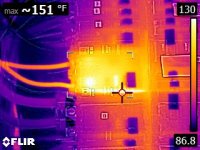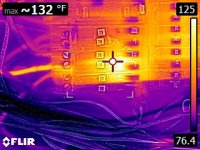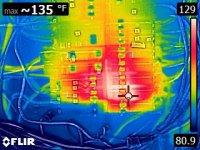Masterapprentice
Member
- Location
- Arkansas
- Occupation
- Master electrician
I looked at a job that had some breakers reaching 120-158 deg on single pole circuits and two pole circuits. Most are tandem 20 amp breakers in and older qo panel, Cooper bus bars. I took thermal imaging of the panel. Some breakers are getting very hot. The circuit wires are not too hot, maybe 110 at max. The amperage at each breaker never exceed 12-13 amps. All connections are tight. It’s a 200amp panel and a and b phase max out at about 98-100 amps. I cannot figure why they are heating up so much. I replaced several breakers to see if the stab connections are loose, but it didn’t seem to change temp much. Should I just purchase a larger circuit capacity panel and make sure all circuits have its own breaker? What is causing such excessive heating without even coming close to overloading the circuits and all breaker connections are good. Would the qo breakers lose a tight connection over time and cause this?




